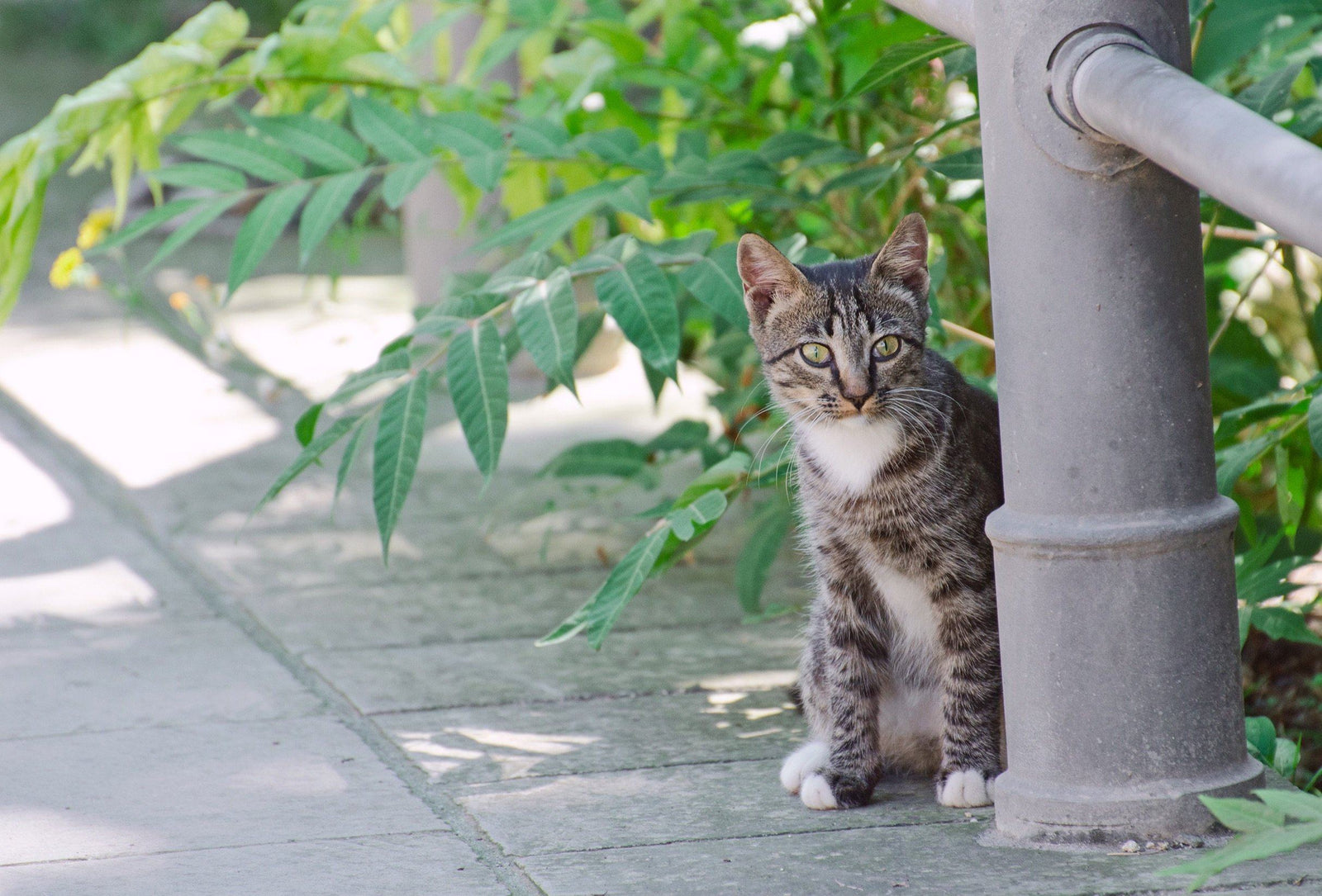
Wondering what to do with feral cats?It's a dilemmathat all cat owners and lovers face: Do I feed the poor feral kitties or do I call animal controlor animal servicesso they stop destroying my yard?
As much as you may want to be the Mother Teresa of cats, it’s just not feasible to feed and care for them all.
If you try, you’ll likely notice that theferalcat population around your house will explode. And we don’t want you to bankrupt yourself for the sake of that cute community cat.
Don’t worry: there’s a better way!
Here’s what all alley cat alliesneed to know aboutstraycats and how to best deal with their cute, pleading Oliver Twist-like faces.
What Are Feral Cats?

Feral cats, stray cats, neighborhood cats, alley cats – each of these terms describes the same scenario:
Cats without human homes.
Now, before you start getting teary eyed and pledging to adopt every feral cat or feral kittens you find, we have some news for you: cats are meant to be wild.
Don’t get us wrong: we love our dear, adorable, pamper-worthy domesticated cats! We love them so much we worked some scientific mojo to make sure you have a heads up when your kitty’s not feeling quite right.
But the truth is that your cat’s DNA is all about the wild life. And feral cats have that same wild DNA.
When your domestic cat sits in the window eyeing the birds and other critters scurrying around outside, his predatory instinct is at work. Feral cats thrive on that predatory instinct and use their natural abilities to dash, dart, jump, and capture their prey in the wild.
They’re also masters of conserving energy, which means they can go longer than your full-bowl-demanding cat can without food.
Feral cats are also geniuses when it comes to finding safe places to live outside. Just like your fur baby who likes to hide in boxes, under the couch, and in the back corner of your closet, feral cats tap into that primal survival instinct to find the very best outdoor homes that protect them through chilly winters and harsh summers.
So What’s the Problem?

Unfortunately, feral cats are like kids who never learned table manners. They tend to fight with other cats, leave their food scraps in the yard for you to step on, and leave their droppings in the flower box that you only want to smell good things in.
Cat lovers who exercise their good intentions by trying to adopt feral cats often find that their new addition to the family doesn’t want to be an indoor cat – and he may show it by being aggressive.
Adopted adult feral cats tend to get in fights with other pets, scratch children without provocation, and don’t fully grasp the concept of the litter box.
In other words, feral cats like to do their own thing and they don’t care whose house or yard they mess up in the process.
Feral cats that hang out around your home can also cause problems for your domesticated fur babies. Some domesticated cats can feel threatened and get extremely stressed out when they sense another cat encroaching on their territory. Even if there’s a wall and a window between them and their perceived foe.
To avoid any problems with your home, your yard, other animals, and especially your precious pets, it’s best to deal with the problem as soon as it begins.
How to Help Feral Cats?

The People for the Ethical Treatment of Animals (PETA) and The Humane Society of the United States agree, the best way to help feral cats is to use the trap-neuter-release method.
TNR, aka Trap, Neuter, Release
The TNR method of dealing with feral cats is the safest and most humane option for several reasons.
First, trapping and turning feral cats over to shelters or pounds means they will likely be euthanized. Feral cats are not socialized to be pets; they grew up in the wild and it’s pretty dang hard to train them otherwise after that life. Cats that are unsafe to be adopted out are often put to sleep, which no cat-lover wants.
Second, feral cats love their life! They want to stay outdoors, hunt, run, and nap in the sunshine. Let them live their lives outdoors – just.... not where they can ruin your gorgeous garden.
Also, by trapping, neutering, and releasing feral cats, you can solve many other problems at the same time, including:
- Reducing flea infestation problems
- Reducing the number of feral cats by limiting reproduction
- Limit children’s exposure to unsafe or ill cats while they’re playing outside
- Reducing the number of unsafe animals that may lurk around your neighborhood to prey on feral cats, such as coyotes
- Reduce unwanted and unpleasant noises such as late night tomcat fights
How to Trap, Neuter & Release Feral Cats
The TNR method is exactly what it sounds like. First, you trap the cat using a humane cat trap stocked with some appealing kitty chow. Then, you take the feral cat to a local TNR program to be spayed or neutered. Lastly, you release the cat back into the wild.
If you’re about to embark on the TNR journey with your local feral felines, here are some tips to follow:
- Wear thick gloves at all times.
- Place an old towel in the bottom of the trap to protect the cat’s feet from injury on any of the metal parts.
- Place the trap on firm, flat ground so it doesn’t wobble.
- Don’t put the trap food in a bowl. Just place it carefully in a little pile.
- Always keep an eye on your cat trap. Move out of sight, but stay close. A trapped cat can become an easy target for other cat bullies and prey.
- Trap at night or in cool weather only.
- Once the cat is trapped, move gently and quietly to cause as little stress as possible.
- Cover the trap with a blanket or towel to keep the cat calm.
- Once you transport the feral cat to the TNR program, let the professionals handle the cat as much as possible.
- Use care when returning the cat to the wild as he or she may be sore from surgery. Feral cats know how to take care of themselves once released, but while they’re in your custody, try to keep them as calm and safe as possible.
Thanks to the Humane Society of the United States, there is a database of TNR programs around the country.Stop by their website to find one near you.


Follow Us